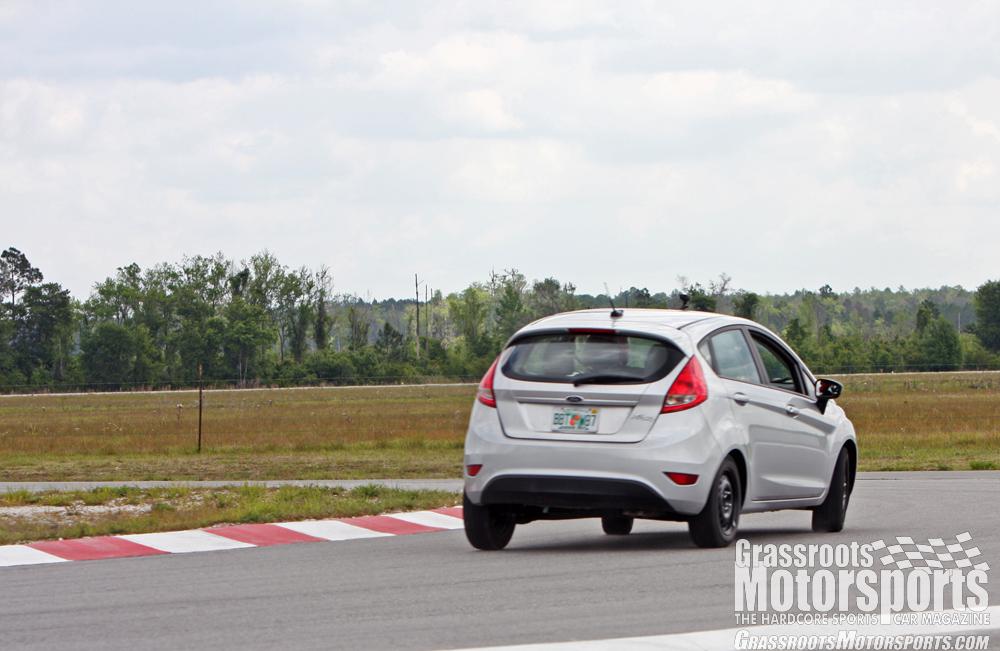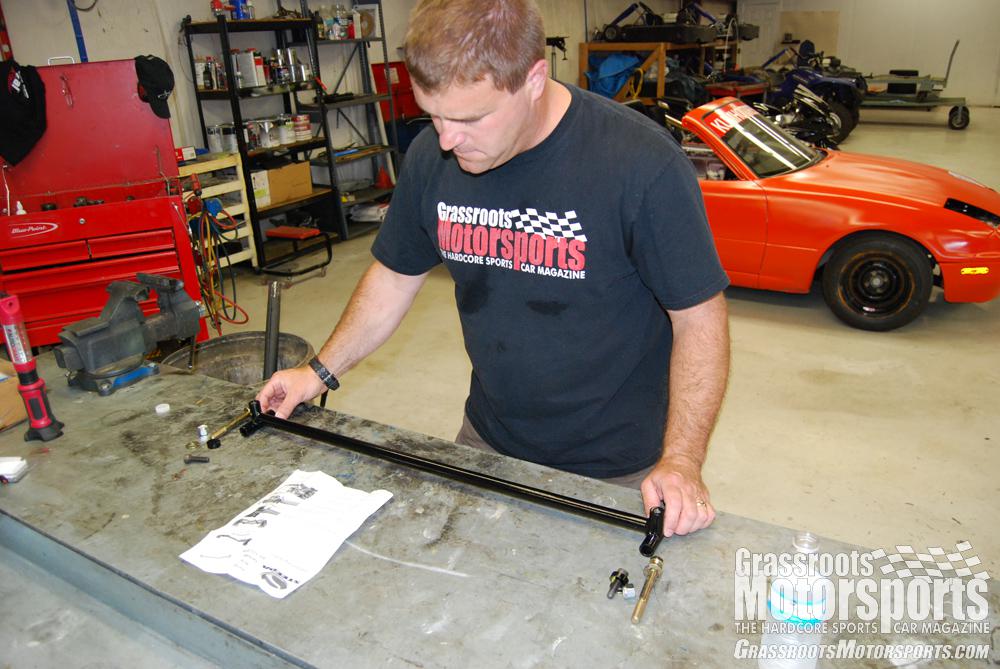Finally a mod! Note that the Mazda 2 uses the same (FoMoCo stamped and labeled) twist beam, and thus greatly increasing the number of options for a rear bar. Now, get some real meats on that little beastie.

It's easy to see that the Fiesta's front tires are heavily loaded.

Admittedly, we read the instructions first.

We bolted the bar in with the top bolts first, so we'd know where to drill holes.

Drilling the holes on either end of the bar took patience, and (in our case) 2 broken drill bits.

The new anti-roll bar sits comfortably inside the factory twist beam.
We had a good idea of what our 2012 Ford Fiesta’s biggest downfall was: understeer, and lots of it.
With an autocross and some track time under our belts, we had a good idea of what our 2012 Ford Fiesta’s biggest downfall was: understeer, and lots of it.
A common method to reduce understeer is a stiffer rear anti-roll bar. So, we ordered one from Steeda Autosports. This is a simple, lightweight solution that only costs $139.95.
The Fiesta’s rear suspension doesn’t technically have a rear anti-roll bar. The car has a twist beam rear suspension, which basically means that the rear wheels are connected by what looks like a piece of guardrail when viewed from below. This beam flexes as part of the suspension, providing roll resistance. This suspension setup is used on many B-class cars, as it is fairly cheap and lightweight.
The Steeda anti-roll bar bolts onto the twist beam on either end, effectively stiffening the beam, and adding more roll resistance to the rear suspension. The bar wasn’t too hard to install, though we did have to drill some fairly large holes in the twist beam. There’s a downside: This option isn’t legal for B-Spec racing, but it is legal for the SCCA’s STF Solo 2 class. When the time comes to go B-Spec racing, we’ll simply unbolt the Steeda anti-roll bar.
How well does this add-on bar work? At low speeds, we couldn’t measure any improvement in lap times, and the car felt exactly the same. However, at higher speeds on track, the car was measurably faster, and felt much more balanced. This anti-roll bar makes the car much easier to drive at the limit, and faster around a track as a result. The poor performance at low speeds is probably due to our less-than-competent tires, as the Fiesta is still rolling on its original set of Kumhos. Overall, the anti-roll bar was a much-needed improvement.
| Get topnotch sports car coverage regularly delivered to your mailbox. Subscribe now for tons of sports car content delivered throughout the year. |
sources
Finally a mod! Note that the Mazda 2 uses the same (FoMoCo stamped and labeled) twist beam, and thus greatly increasing the number of options for a rear bar. Now, get some real meats on that little beastie.
With an autocross and some track time under our belts, we had a good idea of what our 2012 Ford Fiesta's biggest downfall was: understeer, and lots of it.
A common method to reduce understeer is a stiffer rear anti-roll bar. So, we ordered one from Steeda Autosports. This is a simple, lightweight solution that only costs $139.95.
The Fiesta's rear suspension doesn't technically have a rear anti-roll bar. The car has a twist beam rear suspension, which basically means that the rear wheels are connected by what looks like a piece of guardrail when viewed from below. This beam flexes as part of the suspension, providing roll resistance. This suspension setup is used on many B-class cars, as it is fairly cheap and lightweight.
The Steeda anti-roll bar bolts onto the twist beam on either end, effectively stiffening the beam, and adding more roll resistance to the rear suspension. The bar wasn't too hard to install, though we did have to drill some fairly large holes in the twist beam. There's a downside: This option isn't legal for B-Spec racing, but it is legal for the SCCA's STF Solo 2 class. When the time comes to go B-Spec racing, we'll simply unbolt the Steeda anti-roll bar.
How well does this add-on bar work? At low speeds, we couldn't measure any improvement in lap times, and the car felt exactly the same. However, at higher speeds on track, the car was measurably faster, and felt much more balanced. This anti-roll bar makes the car much easier to drive at the limit, and faster around a track as a result. The poor performance at low speeds is probably due to our less-than-competent tires, as the Fiesta is still rolling on its original set of Kumhos. Overall, the anti-roll bar was a much-needed improvement.
| Get topnotch sports car coverage regularly delivered to your mailbox. Subscribe now for tons of sports car content delivered throughout the year. |
sources
Displaying 1-2 of 2 commentsView all comments on the GRM forums
You'll need to log in to post.